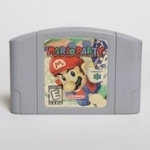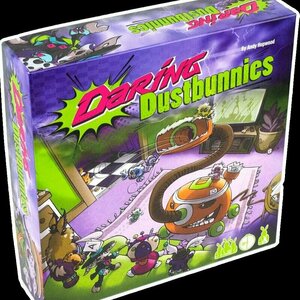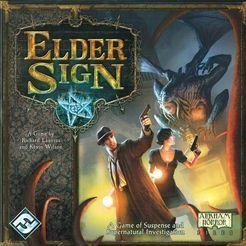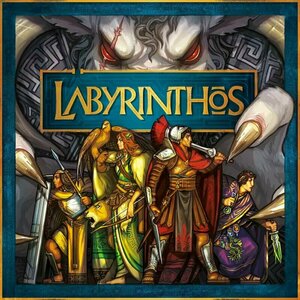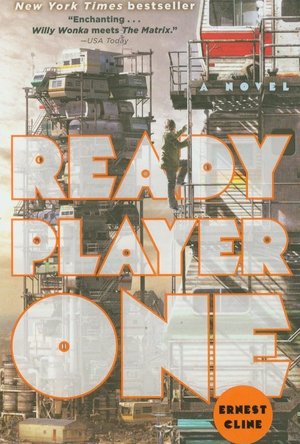Matthew Krueger (10051 KP) rated Mario Party in Video Games
Nov 5, 2019
Lets talk more about it...
Mario Party is a party video game with six playable characters: Mario, Luigi, Princess Peach, Yoshi, Wario, or Donkey Kong. In the game's storyline, Mario and his friends argue about which of them is the Super Star. To settle their dispute, they set out for adventure to determine which of them is best.
Upon starting a board, players each hit a dice block to determine turn order, with the highest number going first on each turn and the lowest number going last.
Blue spaces give three coins to any player who lands on them, and red spaces take away three coins (both increased to six coins during the last five turns). Bowser also has his own spaces on the board map which hinder the players' progress.
Each player's goal is to collect the most stars. Purchasing stars requires coins, which can be earned through mini-games that are played once at the end of each turn. Each mini-game is chosen randomly. Mario Party features more than 50 mini-games, divided into several categories:
1. 4-player mini-game: each player competes against one another
2. 1 vs. 3 mini-game: a team of three players competes against a lone competitor.
3. 2 vs. 2 mini-game: competing teams of two against two.
4. 1-player mini-game: a lone player works toward a goal to win the mini-game.
Several characters appear throughout each board map, and each character can have an effect on players who reach them. Stars can be purchased from Toad for 20 coins. Boo can steal coins or a star from another player on behalf of anyone who requests it; stealing coins is free, but stealing a star costs 50 coins. Koopa Troopa appears at the starting point on board maps and will give 10 coins to each player who passes him. Bowser tries to foil the efforts of any player who passes him by taking coins.
Three bonus stars are awarded at the end of each board map: two are given to the player(s) who collected the most coins in mini-games and throughout the board map game, and the third is given to the player(s) who landed on the most "?" spaces.
In Mario Party, certain minigames required players to rotate the Nintendo 64 controller's analog stick as fast as they can. Some players reportedly got blisters, friction burns and lacerations from rotating the analog stick using the palms of their hands instead of using their thumb.
complaints were received by New York's attorney general's office and Nintendo of America eventually agreed to a settlement, which included providing gloves for anyone who had hurt their hand(s) while playing the game and paying the state's $75,000 legal fees. At the time, providing gloves for the estimated 1.2 million users of the game who might have been affected could have cost Nintendo up to $80 million.
The analog stick rotation has been used sparingly since Mario Party 2. Despite Nintendo's current analog sticks being better suited to play these games than the hard plastic of the N64 controller, Mario Party has not been re-released for the Virtual Console. For the Wii Virtual Console, Nintendo skipped it and instead re-released Mario Party 2, which was later also made available for the Wii U Virtual Console.
Mario Party is a must play game, like i said before its fun, enteraining, fustrating and you can either play with your friends or your family.
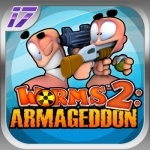
Worms 2: Armageddon
Games and Entertainment
App
#1 Turn-Based Game in 135 countries - #1 Strategy Game in 100+ countries #1 Game overall 35+...
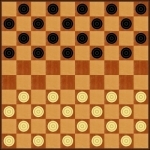
Maximus Draughts
Games and Education
App
Enjoy the game of international draughts (or 10x10 checkers) at a yet unprecedented level for...
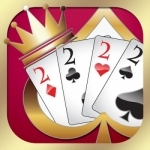
B-Bro Big2 (Pusoy Dos/Capsa/Big Deuce)
Games and Entertainment
App
The Most Complete and Authentic Big 2/Pusoy Dos ! (Chinese Poker,Capsa,Choh Dai Di, Da Lao Er)...
Purple Phoenix Games (2266 KP) rated Daring Dustbunnies in Tabletop Games
Mar 3, 2021
Daring Dustbunnies is a card-driven racing game for two to five players. In it players assume the roles of mystical rabbits whose fate is linked to colored fluffballs attempting to get close to the vacuum without being sucked up into it. Through timely card play the mystical hares can eke out a win or suffer the ultimate fate of being sucked into the evil Hoover (not a sponsor) of death.
DISCLAIMER: We were provided a copy of this game for the purposes of this review. This is a retail copy of the game, so what you see in these photos is exactly what would be received in your box. I will describe the overall game flow and major rule set so that our readers may get a sense of how the game plays. Like what you read? You may purchase a copy online or from your FLGS. -T
To setup place the Start tile and Vacuum tile on the table with room tiles between depending on the number of players. The gold, silver, and bronze medals, all six fluffballeeples, cat, and dog tokens will be placed on or near the modular board. Each player will be dealt two character cards, choosing one to represent themselves and the other to be flipped as a resource and Fate token organizer. Fate tokens are dealt to each player. The players will look at the Fate cards and then place them face-down on their inactive character tile. Each player receives one Wire token, three starting Static tokens, and four Move cards. The remaining Move cards and Charms cards are to be shuffled and set in decks near the board. The player who last used a vacuum will be the starting player and the game may begin!
On a turn the active player will choose one of their Move cards to play and resolve. Move cards typically show a numeric value and color of fluffball to be moved. Should the player throw a 1 of Pink, then the pink fluffballeeple is moved one space closer to the vacuum tile. If there are no other fluffballs on this space the player will perform the space’s special action. This could include playing an extra Move card, flipping the top Move card and resolving, dumping a Move card from hand, taking or giving a Move card from hand from/to another player, or moving another fluffball one space forward. If a fluffball lands on a space containing another fluffball the moving fluff instead receives a number of Static tokens equal to the number of other fluffballs on the space.
Some Move cards do not move fluffballs. Instead they may activate the Cat or Dog, which forces fluffballs either toward the vacuum or away from it, respectively (darn cats). Some cards are Talismans which force the active player to reveal their Fate card for the remainder of the round. This is important because maneuvering fluffballs in order to keep their own Fated fluff free from the vacuum is a perilous task for the player. Once their Fate token is revealed other players may then focus Move on that color fluff in order to knock out its player for the round.
Once a fluffball approaches the vacuum tile and is forced to move into it, the fluffball stops at the Tube of Destiny. Within this tube fluffballs are able to be saved with savvy cardplay, but one more Move card played matching the fluffball’s color is a death sentence to to the Bag of Beyond. Fluffballs in the Bag may not be saved by any means.
Ways a fluffball can be saved from the Tube are by Charm cards, Wire tokens, and character special abilities (possibly). Charm cards may be played before or after a Move card has been played on any turn. They are powered by Static tokens (game currency) and can offer a multitude of special powers. Wire tokens are provided at game setup and can move a fluffball backwards (away from the vacuum) for a cost of ALL the player’s Static. All characters will have special abilities printed on their character tiles, and are able to be used once per round. As each game lasts three rounds, these are very powerful.
Play continues with each player taking turns playing their cards, using Charms and special abilities, and refilling their hand of cards once all cards in hand have been played until all end of round conditions are met. The fluffball closest to the vacuum without being inside it is awarded a Gold medal, the next closest the Silver, and next closest the Bronze. At the end of three rounds players compare numbers of medals won and determine the winner!
Components. I want to start by saying I absolutely adore the theme and art style of this game. How quirky and wonderful is this theme? And it is so colorful and stinking cute! I just smile a giddy smile every time I play this because I am just having so much fun getting into the theme and using the components. That said, this game uses a lot of different components and the quality is very very good across the board. The only real minor quibble I have is the design of the Static tokens. They are supposed to be placed below the Fate token on the backside of the character tile, but that area of the tile coupled with the busy Static token design sometimes causes my eyes to go a little funny. It’s very busy-on-busy. If only one item was busy and the other a little more plain I would be completely happy with the components.
The gameplay is very unique and enjoyable. Yes, I know several games that use cardplay to move tokens along a race track. But usually in games like that the goal is to be the first across the finish line. Here the player wants their linked fluffball to be closest to the finish line without actually passing it. This little twist is something I very much appreciate and causes players to adopt different strategies than one might normally utilize.
The different special powers of the characters and Charms cards are also aspects that help raise this game’s favor. Add in the abilities of the Cat and Dog and now there are so many options for players to choose as they play the game. I know Andy Hopwood, designer, takes pride in his ability to offer games with familiar playability but with a twist. Daring Dustbunnies is no different, but is also quite a bit different than what I was expecting.
I happen to very much love this game. My 4-year-old son and I also play a watered-down version of the game without the special powers and Charms (because he can’t read yet), and he absolutely adores it. In fact, my boy enjoys just carrying the vacuum tile around the house as he would a treasured stuffie. If THAT doesn’t say “great game,” I don’t know what does.
Wait, yes I do know what does. I can say it. Daring Dustbunnies is a great game! As I am learning more about Andy Hopwood’s games I am starting to appreciate the wonderful designs and this one is one of his best, in my opinion. If you are looking for a cute and excellent game with an inventive theme and familiar gameplay, but with a twist, then you need to look into Daring Dustbunnies. Purple Phoenix Games gives this one a frantically Fated 16 / 18. Play it with your littles. Play it with your significant other(s). Play it with family and friends. I have a feeling all will enjoy it.
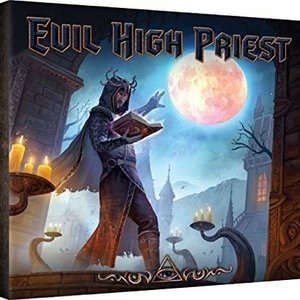
Evil High Priest
Tabletop Game
You are an ambitious priest in a sinister cult, but your Great Old One lies dormant, locked under...
Matthew Krueger (10051 KP) rated Elder Sign in Tabletop Games
Jul 17, 2020 (Updated Jul 18, 2020)
Elder Sign- is a cooperative card and dice game, based on the Cthulhu Mythos of horror writer H.P. Lovecraft and Chaosium's Call of Cthulhu roleplaying game. It is published by Fantasy Flight Games, which also produces the Cthulhu Mythos games Arkham Horror, Call of Cthulhu: The Card Game, Mansions of Madness, and Eldritch Horror.
Gameplay:
Players randomly select a monster (known as an Ancient One) to oppose. The Ancient One requires a certain number of elder sign tokens to "seal" or imprison it. Conversely, the Ancient One can be "awakened" or released by a number of doom tokens.
There are also many other less powerful monsters that can appear during the game.
Each player chooses an investigator to play as (usually randomly), each investigator having unique abilities.
Players take turns exploring a randomly generated room (there are Adventure cards and Other World cards). If a player succeeds at completing all of the tasks in the room they are exploring, they obtain a reward. Conversely, if they fail, they receive a penalty. If the player's investigator is devoured (either by losing all of their stamina and/or sanity), they lose what they originally had, a doom token is added to the doom track, and the player returns to play as a different investigator.
Rooms are explored until either the Ancient One is "sealed" or "awakened". If the Ancient One is sealed, the players immediately win. If the Ancient One awakens, the players must face it in battle. This battle is designed to be extremely difficult with a low chance of success, so players must try to prevent the Ancient One from awakening at all costs.
Its a excellent gothic horror game, it has fantasy, dice, cards and adventure and alot of replayablity. Buy it if you havent already. Cause its excellent.
Purple Phoenix Games (2266 KP) rated Labyrinthos in Tabletop Games
Feb 10, 2021
Disclaimer: I do not intend to rehash the entire rulebook in this review, but rather provide an overview of the rules and game flow. -L
Labyrinthos is a game of action and adventure in which players are exploring the famed Labyrinth of Daedalus, searching for the 4 secret keys that will let them escape! All this while avoiding traps, their competitors, and the deadly Minotaur who seemingly lurks around every corner. To setup for a game, create the Labyrinth as described in the rules – in the end it will be a 7×7 tile grid. Each player receives a Player Board, Standee, 4 Desperation cards, 7 Action tokens (3 Hand tokens and 4 Feet tokens for the first turn). The remaining Desperation cards and tokens are placed to the side of the play area, along with the Key tokens. Select a starting player, and the game is ready to begin!
Over a series of rounds, players will take turns performing various actions, exploring the Labyrinth, searching for Keys, and avoiding the Minotaur. On your turn, you will be spending Action tokens to perform various actions, like: Move (to an adjacent tile), Explore (flip over an adjacent face-down tile and move to it), Discover Key (gain the corresponding Key token to your Player board), Desperate Action (play a Desperation card), and a handful of other actions. Each action has a token cost associated with it, and you must pay it in order to perform the action. Each different Player Board also has a unique Special Ability that is active during the game. Once you have taken as many actions as you can/want to take, you will return any unused Action tokens to the supply, and then choose a combination of 7 new Action tokens to be used on your next turn. Then, you will refresh your hand – drawing or discarding Desperation cards so your hand limit is 4 minus the number of Key tokens you possess.
The final step of your turn is to roll the Minotaur die and resolve his movement/actions. The movement of the Minotaur is similar to the movement rules of players, and some results on the Minotaur die activate special abilities. If the Minotaur ever enters a tile occupied by a player, he immediately Attacks! The controlling player rolls the Blood die, and the attacked hero gains that number of Wounds to their Player Board. A Wound on your Player Board will cover one of your turn actions, prohibiting you from performing that action until you spend Action tokens to Heal. Certain tiles of the Maze have special symbols that will immediately affect the gameplay. For example, any time a player moves onto a Trap tile, they immediately take a Wound. When a player is on a Hide tile, they cannot be Attacked by the Minotaur. Play continues in this fashion, alternating turns, until a player has collected all 4 Key tokens and made their way back to the starting Door tile. That player has successfully escaped, and all others remain trapped in the Labyrinth!
I know that may seem like a lot, but the gameplay itself is actually pretty streamlined and intuitive. The action descriptions on the Player Boards are clear and concise, acting as a player reference sheet in a way. I appreciate the Player Boards SO much because it keeps me from having to continually refer to the rulebook for any action questions. The action options themselves are simple to understand and perform, but the strategy required for overall success is trickier to master. This truly is an exploration game – the 7×7 grid is created anew every game, and chances are you will never play with the same grid layout twice. The Key tiles could be anywhere, and you have to try to get to them before your opponents. The different tile symbols offer some risk/reward decisions. Do you risk turning over an undiscovered tile in hopes that it gets you across this gap? It could be a Trap! Or it could be a Secret Passage that allows you to move elsewhere. You’ll never know if you don’t try it!
I also really like the mechanic of the Minotaur in this game. At the end of your turn, you roll the Minotaur die and resolve it. That means the Minotaur is essentially controlled by all players. It becomes a sort of tug-of-war, if you will, as players try to get the Minotaur to attack opponents, while hopefully also staying out of his range for the next player’s turn. Another neat thing about Labyrinthos is that when you collect a Key token, it actually provides you with an action and is added to your Player Board, covering an existing action. Through the use of actions and Desperation cards, you could be able to move Keys around on your Player Board too. Maybe its initial placement doesn’t fit the situation anymore, and you need that covered power back! The opportunities to strategize with your actions are endless, and that keeps the gameplay engaging. One last cool thing I want to mention is the selection of new Action tokens at the end of each turn. Certain actions require Hand, Feet, or both types of tokens, and having the ability to choose the combination of those for yourself feels pretty powerful. It could also quickly backfire, if suddenly you find yourself needing Feet tokens, but you only have Hands left! It’s another layer to the strategy, and it helps up the excitement of play.
Components. The components of this game are great. The maze tiles are nice and sturdy, the symbolism clean and clear. The Desperation cards have some cool flavor text, and their actions are straightforward. All of the Standees, tokens, and dice are good quality that will hold up to lots of handling. All in all, great production quality!
I am extremely happy that I decided to back Labyrinthos on Kickstarter. For being a seemingly simple game of maze exploration and movement, there is definitely a lot more to it than meets the eye. Players have to manage resources and plan ahead for what they need in subsequent turns. Desperation cards can affect the gameplay, and can sometimes even be used during an opponent’s turn. The ability of Key tokens to cover existing abilities really makes players think about what their strategy is moving forward. All of these aspects put into one game make for a fun and immersive experience. Purple Phoenix Games gives it an a-maze-ing 10 / 12. Also, special shout-out to the all-female team behind this great game!! It is really cool to see how women are moving up in the gaming industry, and becoming prominent players across game design, art, production, and media content realms within this hobby. Kudos to you ladies! I am very much looking forward to supporting your games in the future!
Logan (76 KP) rated Ready Player One in Books
Jan 14, 2019
I only played one MMORPG seriously (Guild Wars, I'm looking at you!), and it consumed my life for a good year or so. This is important - all sorts of games are mentioned in Ready Player One, but it takes place within an MMO, and I'd wager that experience with MMOs will vastly increase your enjoyment of this book. It brought back all my fondest memories of gaming culture. It wasn't the most complex story of all time, but it did constantly manage to remind me of how much I loved hanging out with friends, arguing about games, and competing to see who truly had the best grasp of combat mechanics in super smash bros.
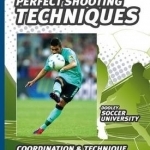
Soccer, Perfect Shooting Techniques
Thomas Dooley and Christian Titz
Book
Victory or defeat is often determined by a successful shot on goal. Goals make soccer interesting,...
